The decision to transition to a Platform Registered Investment Advisor (RIA) model can significantly transform the way financial advisors manage their practices, offering more control and flexibility while still benefiting from a robust support system. This model provides a balance of independence and resources, giving advisors the freedom to manage client relationships while receiving the operational and compliance support that larger organizations offer. However, making this transition requires careful consideration of various factors. Below is a comprehensive guide on the essential factors that advisors should evaluate when contemplating a move to the Platform RIA model.
Understanding the Platform RIA Model
At its core, the Platform RIA model blends the autonomy of an independent RIA with the technology, operational, and compliance support of a larger firm. Advisors retain control over client-facing aspects of their practice, such as investment management and relationship-building, while leveraging the resources provided by their affiliated firm. These resources typically include compliance support, technology platforms, custodial services, and back-office operations.
This approach enables advisors to focus on growing their client base and offering personalized services while the affiliated firm handles many of the administrative and regulatory challenges that come with running a practice.
Regulatory Requirements: Compliance and Oversight
One of the first things an advisor must consider when transitioning to a Platform RIA model is the regulatory framework. While the model offers autonomy, advisors must still navigate the complex regulatory landscape that governs RIAs.
- Registration: Independent advisors managing more than $100 million in assets must register with the Securities and Exchange Commission (SEC). For smaller firms, state registration may be necessary. The Platform RIA firm typically adds the IAR to their registration or assists with the registration process, filing necessary paperwork, and ensuring compliance with industry regulations.
- Compliance Support: Independent RIAs are responsible for their own compliance, but Platform RIA advisors benefit from shared compliance resources provided by the firm. These resources may include access to compliance teams, ongoing training, audits, and additional support to ensure advisors remain compliant with SEC or state regulations.
- Fiduciary Duty: As a fiduciary, advisors are required to act in the best interest of their clients. This duty remains intact when transitioning to a Platform RIA model. The affiliated firm may have internal policies and best practices to ensure this fiduciary duty is upheld across its network of advisors.
Client Communication Strategies: Maintaining Trust and Transparency
Client communication is a critical aspect of any transition, particularly when moving to a new business model. Advisors need to ensure that clients remain informed, comfortable, and confident throughout the process.
- Transparency: Clients must be fully aware of any changes that may affect them. Advisors should explain why the transition is occurring, how it benefits both them and the clients, and clarify any changes to services or fees.
- Reassurance: Since the transition may feel unsettling to clients, it’s essential to reassure them that their advisor’s fiduciary duty remains the same. Advisors should also highlight how the Platform RIA model enhances their ability to serve clients, whether through improved technology, better service offerings, or more personalized attention.
- Managing Expectations: Clear communication around any potential fee changes or service adjustments is crucial. Clients should be aware of how fees may evolve with the move to the Platform RIA model to avoid any surprises down the line. Proactively sharing this information helps maintain trust and minimize uncertainty.
Operational Logistics: Technology, Custodians, and Back-Office Support
Transitioning to the Platform RIA model also means navigating new operational structures. The success of the transition will depend on how well the operational logistics align with the advisor’s practice needs.
- Technology Integration: Many Platform RIA firms provide advisors with access to integrated technology platforms, such as CRM systems, portfolio management software, and financial planning tools. Before transitioning, advisors should evaluate the available technology to ensure it aligns with their current systems and enhances efficiency. Seamless integration between old and new systems can streamline operations and reduce disruptions.
- Custodial Services: Custodians play a vital role in managing client assets, executing trades, and maintaining transparency. Advisors must assess which custodians their Platform RIA firm works with, their fees, and the services provided. The right custodians can support an advisor’s needs and provide clients with a high level of service and confidence in their investment strategies.
- Compliance & Back-Office Support: A key benefit of the Platform RIA model is the operational support provided by the affiliated firm. This can include trade execution, billing, reporting, compliance, and other administrative tasks. By outsourcing these duties, advisors can focus on growing their business and nurturing client relationships rather than dealing with day-to-day back-office operations.
Scalability: Planning for Growth
The Platform RIA model not only offers operational support but also the scalability to expand your practice as your business grows.
- Client Acquisition: The affiliated firm often provides resources to help advisors attract new clients, such as marketing support, lead generation, and access to a broader referral network. These resources can play a pivotal role in growing a practice more effectively and efficiently.
- Team Expansion: As your practice scales, you may need to hire additional support staff. Platform RIA firms often assist with recruiting, training, and staff management, ensuring that advisors can expand their team without losing focus on their clients.
- Service Diversification: Platform RIAs often offer an array of services that advisors can integrate into their practice. This may include adding financial planning, tax planning, or estate planning services to broaden the offerings and meet evolving client needs.
Financial Considerations: Evaluating Costs and Payouts
When transitioning to a Platform RIA model, advisors should evaluate the financial implications, including the cost structure and payout arrangements.
- Payouts: Platform RIA firms often offer higher payouts than traditional wirehouses, but the payout structure can vary depending on the firm’s support and fee structure. Advisors should consider how their earnings will be impacted by the model and ensure that the compensation structure aligns with their financial goals.
- Fee Structure: It’s essential to understand the fee arrangements with the affiliated firm. Advisors may need to pay for specific services, such as compliance support, technology, and custodial services. Comparing these costs to the potential savings from eliminating certain firm overhead costs is critical in determining whether the transition is financially beneficial.
Transitioning to a Platform RIA model can offer advisors greater autonomy, enhanced client service capabilities, and operational support from a larger organization instead of creating an independent firm. However, the decision to move to this model requires careful evaluation of regulatory requirements, client communication strategies, operational logistics, scalability potential, and financial considerations. By thoroughly assessing these factors, advisors can make an informed decision that best aligns with their goals, the needs of their clients, and the future of their practice.
Whether you are seeking more control over your practice, the ability to scale, or the support of an established organization, the Platform RIA model may provide the ideal balance of independence and resources.
